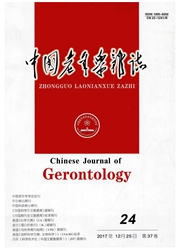

 中文摘要:
中文摘要:
目的在同一豚鼠体上建立痕迹性和延迟性眨眼条件反射双任务模型,为研究认知过程中前额叶与其他脑区信息编码机制提供模型。方法以经典的眨眼条件反射为基础,采用1 kHz和3 kHz正弦波纯音分别配对压强为20 kPa的束状氧气流对豚鼠左侧眼角膜进行刺激,利用肌肉张力换能器采集豚鼠眨眼活动,用眨眼条件反射行为特征传感器信号分析软件V2.2版分析眨眼数据。结果经过10 d的配对训练后,6只豚鼠均建立了痕迹性和延迟性眨眼条件反射双任务。实验发现,与痕迹性眨眼条件反射相比,豚鼠更容易建立延迟性眨眼条件反射。结论利用同一豚鼠首次成功建立了痕迹性和延迟性眨眼条件反射双行为模型。
 英文摘要:
英文摘要:
Objective To establish a dual task model of trace and delay eyeblink conditioning in the same guinea pigs, which offering a model for the relationship study of the frontal cortex and other brain regions in cognitive process. Methods On the basis of the classical eyeblink conditioning, 1 kHz and 3 kHz tone conditioned stimulus(CS) were separately paired with a 20 kPa corneal oxygen-puff uncondi- tioned stimulus (US) to stimulate the left cornea of the guinea pigs. Blink activity in guinea pig was collected with muscle tension transducer, and eyeblink conditioning behavior feature sensor signal analyzing software V2. 2 was used to analyze the data of eyeblink. Results After 10 days' paring training, all 6 guinea pigs had established the dual task model of trace and delay eyeblink conditioning. Compared to trace eyeblink conditioning, it was easier for the guinea pigs to establish delay eyeblink conditioning. Conclusions It is first reported that the same guinea pigs could also obtain trace and delay eyeblink conditioning , which provides a reliable model for studying the exact role of prefrontal cortex in the cognitive processes.
 同期刊论文项目
同期刊论文项目
 同项目期刊论文
同项目期刊论文
 Lidocaine Inhibits Cell Invasion and Migration of TRPV6-Expressing Cancer Cells by TRPV6 Down-regula
Lidocaine Inhibits Cell Invasion and Migration of TRPV6-Expressing Cancer Cells by TRPV6 Down-regula Endovascular versus Non-Interventional Therapy for Cervicocranial Artery Dissection in East Asian an
Endovascular versus Non-Interventional Therapy for Cervicocranial Artery Dissection in East Asian an Effect of PulsedElectromagnetic Field on Bone Formation and Lipid Metabolism of Glucocorticoid-induc
Effect of PulsedElectromagnetic Field on Bone Formation and Lipid Metabolism of Glucocorticoid-induc 期刊信息
期刊信息
